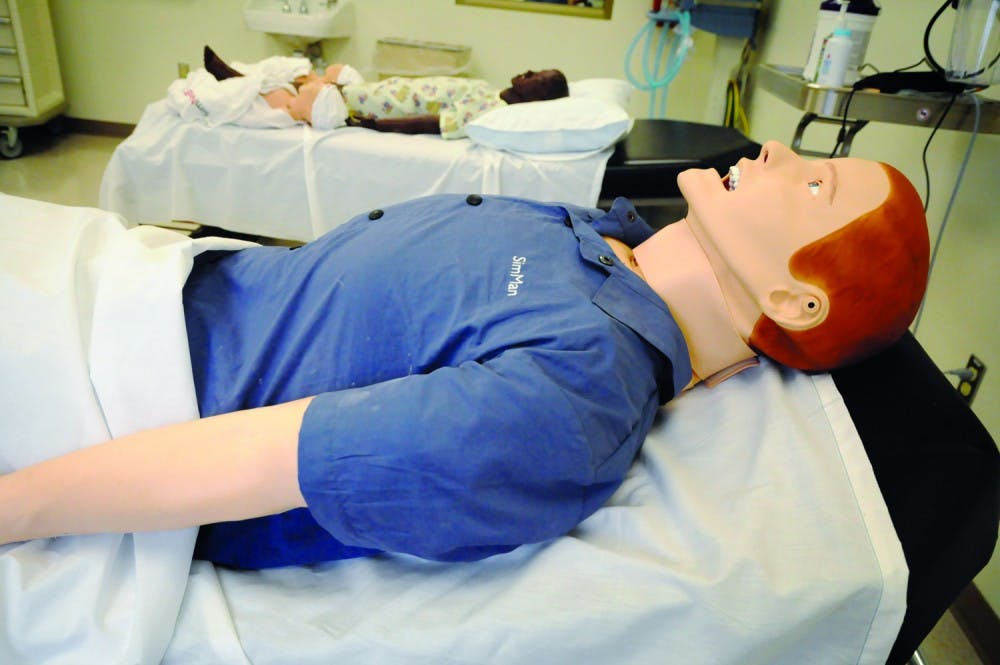Medical robots offer real-life ER training for CMED, other students
On the second floor of the Central Michigan University College of Medicine building, a body convulses on a hospital bed.
A nearby display informs the obvious: The patient’s vital signs are critical. His chest expands and contracts irregularly as his eyes blink wildly.
Luckily, this patient is not made of flesh and bone, and is instead a state-of-the-art simulation mannequin used to teach students how to work in an emergency room.
“Medical simulation has exploded in the last 10-15 years,” said Steven Vance, associate dean of academic and clinical technology. “The goal is to get students and residents in an environment where they can learn and made mistakes without adverse patient results.”
Simulations have become more popular among medical schools as advances in technology have allowed them to get away from using humans in the learning environment, Vance said. This helps clear up any ethical issues surrounding patient testing on humans or animals. Now CMED faculty can allow a student to make mistakes that would kill a patient, the only result being a positive teaching moment.
“It is a great learning tool since we can get hands-on experience with a tool that is almost equivalent to a human body, without risk of further injury,” said Plymouth freshman David Hales. “Since it takes the human equation out, it will be a less stressful learning environment for CMED students.”
The lab houses seven lifelike dummies, each named after the various Michigan counties served by CMED. This excludes a birthing dummy, aptly named Bertha, and two baby models.
The robots are programmed to portray a set of illnesses so students can diagnose and come up with a plan for medical intervention. Once they have a plan, the students can perform procedures on that the dummies while they react in real-time.
The robot cost between $20,000 to $75,000 depending on the size and are powerful teaching tools, Vance said.
Andrea Beatty, executive administrative assistant for the simulation lab, said student use of the dummies is not limited to those in CMED course. Students studying to be a physician and nursing assistants, as well as those in sports medicine, audiology and physical therapy, also use the simulation lab for course work.
Students can also sign up to practice on the dummies outside of classes, Beatty said, which is something that has become very popular among students after their first experience with the lab.
CMU has been conducting simulations in Saginaw’s east campus since 2007. Vance said CMU conducts over 15,000 learner hours annually.
To use the lab, contact Beatty by calling 989-774-1633, or by email at beatt2ae@cmich.edu. Students can also visit CMED Room 2404.





